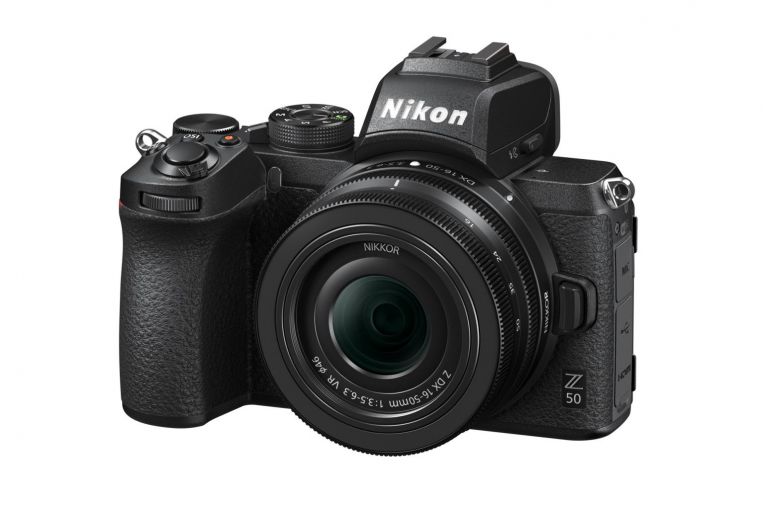Japanese imaging giant Nikon launched the full-frame Z6 and Z7 mirrorless cameras in late 2018, but their hefty price tags – from $3,300 to more than $5,000 – meant not many could afford them.
There is now a more affordable Z series: the Z50. Its price starts at $1,499 with a Nikon Z DX 16-50mm f/3.5-5.6 kit lens. Even if you add a Nikon Z DX 50-250mm f/4.5-6.3 telephoto lens, it will set you back by just $1,849 in total.
The Z50 uses a 20.9-megapixel APS-C image sensor – Nikon calls it DX – instead of the full-frame one used by its cousins. There are also fewer weather-sealing points for its body.
With the smaller sensor, the Z50 is more compact than both the Z6 and Z7. It is also very lightweight: The body weighs 450g with battery and memory card. I easily carried it around with the 50-250mm telephoto lens to photograph stray cats in my neighbourhood and did not feel any back or shoulder aches.
The Z50’s body retains most of the flagship models’ design elements. I like its prominent and comfortable grip, which makes it a joy to hold.
Unlike other camera-makers, which often reduce the button count for mid-range models, the Z50 is generous in this department.
There are two control dials – one on top of the grip and one above the rear thumb rest – for a quick change of settings such as shutter speed and aperture in manual mode. Many mid-range models have just one control dial.
The dedicated joystick found in the Z50’s full-frame cousins is absent, but you can use its rear directional keys to move the autofocusing (AF) point. This is something that many “entry-level” mirrorless cameras lack. Overall, the Z50 offers superb handling rarely seen in its class.
On the downside, the 3.2-inch touchscreen cannot be used to move the AF point or other functions when using the electronic viewfinder, which some mirrorless cameras can do. But the display can be flipped down for selfies.
On the left side of the camera are the micro HDMI and micro-USB ports. You can charge the camera using the micro-USB port. But I wonder if Nikon should have provided the increasingly popular and faster-charging USB-C port instead.
Powering up and shutting down take 1.3 seconds each – faster than most mirrorless cameras’ two second times for each operation.
Using an SD card with a writing speed of 95MB per second, the Z50 took 30 RAW photos in 3.2 seconds before the buffer ran out. This is faster than the Z7 that I tested in 2018, which took 21 RAW photos in 3.1 seconds.
The Z50’s AF was able to lock on to a focus almost immediately under bright sunlight. Under dim lighting, it did so in about two seconds with the help of the AF assist light.
Image quality is excellent, with plenty of sharp details and good dynamic range. Colours are vibrant and accurate. However, I found the automatic white balance to lean towards yellow in artificial lighting.
I saw no noise artefacts even at ISO 3,200. The artefacts appeared only at ISO 6,400 and above, but the images are still good enough for small prints and Web use. However, there was significant detail loss at ISO 25,600 and above.
The battery life rating of 320 still images on a full charge seems to be a conservative estimate. To my pleasant surprise, after taking 500 images, the camera still had around 25 per cent of battery life left.
With its affordable pricing, compact and lightweight body, great image quality and superb handling, the Z50 offers good value for money.
Perhaps the biggest downer is the limited native Z DX lenses – the two Z DX lenses mentioned earlier are the only two available currently. Hopefully, there will be more native lenses available soon.
FOR
– Affordable
– Lightweight
– Great grip and handling
– Excellent image quality
– USB charging
AGAINST
– Average battery life
– No USB-C port
– Limited native lenses for now
TECH SPECS
PRICE: $1,499 (with Nikon Z DX 16-50mm f/3.5-5.6 kit lens)
IMAGE SENSOR: 20.9-megapixel APS-C CMOS
DISPLAY: 3.2-inch tiltable touchscreen LCD with 1,040,000 dots; Electronic viewfinder with 2,360,000 dots
SENSITIVITY: ISO 100 to 204,800
SHOOTING SPEED: Up to 11 frames per second
CONNECTIVITY: Wi-Fi, Bluetooth
WEIGHT: 450g (body only, with battery and memory card)
RATING
FEATURES: 4/5
DESIGN: 4.5/5
PERFORMANCE: 4/5
BATTERY LIFE: 3.5/5
VALUE FOR MONEY: 5/5
OVERALL: 4.5/5 [ST Tech Editor’s Choice]
Source: Read Full Article
